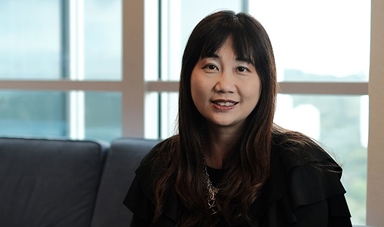Loading component...
At a glance
FACT FILE
Joined: Maritime and Port Authority of Singapore in 2008
Formerly: Spent 14 years in the private sector, including finance manager Emerson Network Power, finance director MTV Asia, finance and operations manager Emerson Process Management
Finance team: 30
Operating revenue: S$280 million
The role: strategic imperative
As one of the busiest ports in the world, the Port of Singapore has about 1000 vessels in its waters at any one time. I’ve been with the agency for the past 10 years.
When I first joined, I started as the CFO and the job scope later expanded to include procurement, administration, facilities management, sustainability reporting, service quality and organisational excellence.
My scenario reflects the experience of many CFOs – as automation and outsourcing replaces basic accounting functions, we are more and more taking on partnership roles with a focus on strategic planning.
Due to these significant and varied responsibilities, I am constantly kept on my toes.
I joined the agency after a decade and a half in the private sector. My purpose was to upgrade and automate outdated systems and improve reporting processes.
Management was prepared to fund the automation using state-of-the-art systems, which was an attractive proposition coming from the private sector. To add to the appeal, I was allowed to bring my team across from my former job.
Game changers: mighty mentors
During my career, I have been fortunate to meet many mentors who unselfishly taught me some of life’s important lessons.
To quote some of my former bosses: one, if you have to sell eight to 10 hours of your time to any organisation, you might as well make the best out of that time and make a difference to society; two, knowledge is useless unless you share it with people working with you; three, as you get higher up in an organisation, mistakes will be amplified and less forgivable.
Looking back, the toughest and most demanding bosses made the deepest impression and, in hindsight, I thank them for making me who I am. I stay in touch with them all to this day.
Challenge: funding constraints
As with most companies, funds and resources are never enough. Come budget time every year, there is always the task of reviewing all competing needs and deciding on the best allocation of scarce resources.
Wearing so many hats, I may also enter a situation where one of my departments requests funds and I have to assess that request independently of the needs of other departments. It is always hard to say no.
However, with experience, I have learned to say “no, but …” instead of “no, period”. That helps tremendously and people start to understand the constraints on the CFO, and most appreciate the time and energy taken to explain the background and reasons behind the decision. Through such understanding they can even become your advocates.
Another challenge that comes to mind was being asked to start sustainability reporting for the MPA (Maritime and Port Authority), even though until 2014 I had never even heard of that term. I reached out to pioneers in this area and admitted my ignorance. Many of them stepped forward to lend me a helping hand and I managed to not only complete my report in a year, but it also complied with Global Reporting Initiative (GRI) Standards and the International Integrated Reporting Council’s <IR> Framework.
In 2017, another feather was added when the latest report was mapped to the United Nations’ Sustainable Development Goals.
I learned that when we are humble and reach out for assistance, often there are kind people around who will assist. Humility is always a trait to treasure.
Lessons learned & best advice
Strategy starts with people
How many times have we heard leaders say that “people are our most important asset”, yet their business plans are all centred around digitalisation, marketing, new products and services, market penetration, customer satisfaction and process improvements? People are left out.
With automation, people fear being replaced, but if you communicate with them and let them know changes can result in more interesting work and a better path forward, they will usually come on board.
Break the routine
Humans are creatures of routine and change is often uncomfortable. The result is that the office is a fantastic breeding ground for inefficient and repetitive processes performed by office zombies who have stopped thinking.
That is why I try to pull myself out of routine processes and meet with each department once a month to go through selected processes using “lean thinking” principles and value-stream mapping. We make regular minor changes and celebrate small wins in the spirit of progression.
Focus on the customer experience
In the fast-paced world of automation, I have seen all inefficient paper flows being automated into [digital format]. This not only comes at a high cost, but also frustration for the deliverer of goods and services because the customer remains dissatisfied.
All automation projects should have a parallel track of change management so you can walk in the shoes of the customers. The focus must be on overall customer experience.

